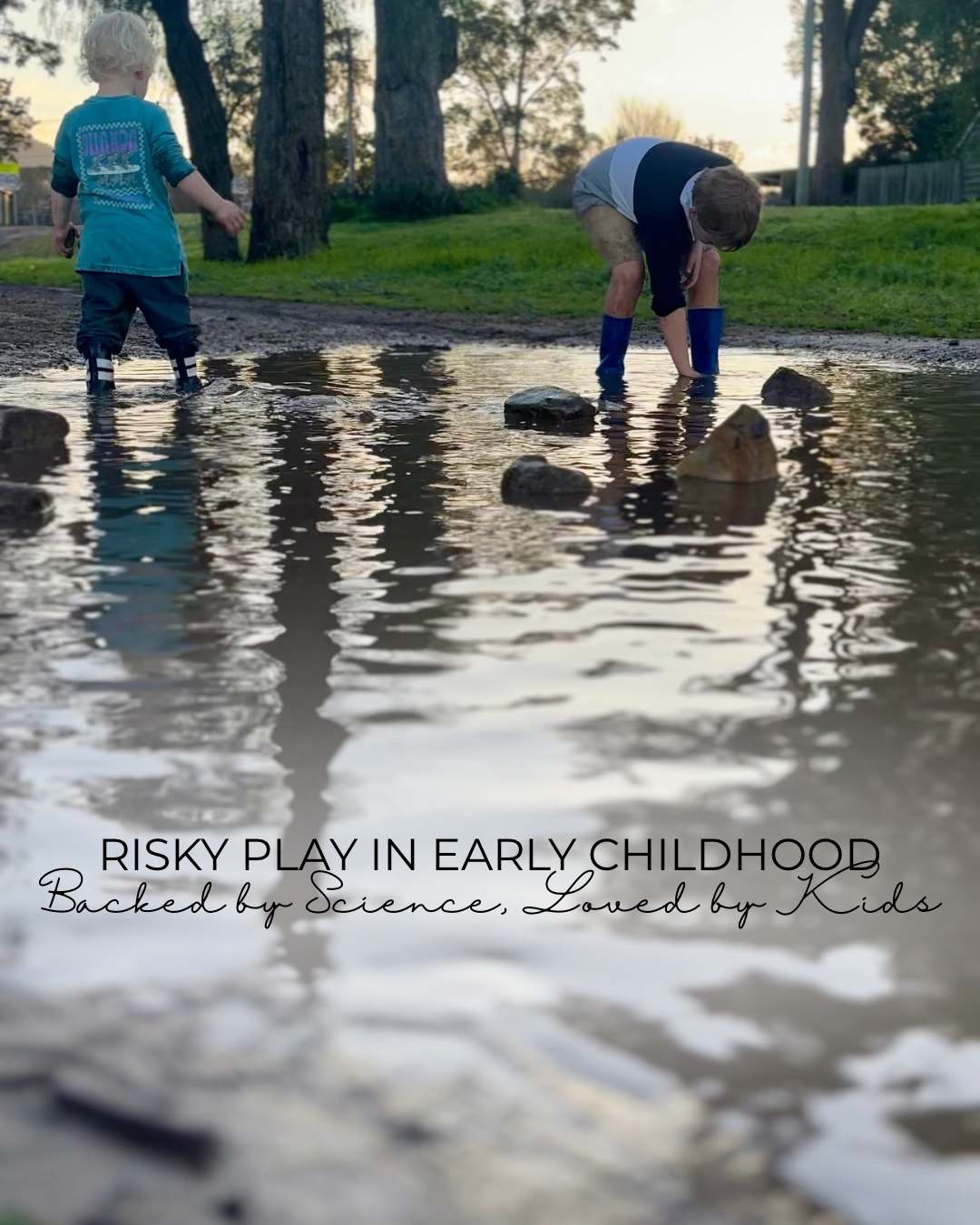
The Importance of Risky Play in Early Childhood Development. An Expert Guide for Parents and Educators.
Share
Risky play is often misunderstood in modern parenting and early childhood education. When most people hear "risky play," they imagine dangerous activities or situations that should be avoided at all costs. But as an early childhood educator and sensory play specialist, I know that risky play is an essential component of healthy child development. It empowers children to explore boundaries, assess dangers, and build confidence in their physical and emotional abilities all within a safe and supportive environment.
In this blog post, I will dive deep into what risky play really means, why it matters, and how you can encourage it in your home or classroom. I’ll also connect these ideas to well-established developmental theories and schemas that show why safe risk-taking is crucial in early childhood.

What is Risky Play?
Risky play refers to thrilling, exciting, and challenging play experiences that allow children to test their limits and capabilities. This can include climbing trees, balancing on logs, jumping in puddles, using tools, or negotiating social boundaries. Risky play is not reckless; rather, it involves a level of uncertainty and challenge that is thrilling yet manageable for the child’s developmental stage.
Dr. Ellen Sandseter, a leading researcher in risky play, categorizes risky play into six types:
-
Play at height (climbing)
-
Play at speed (running, sliding)
-
Play with dangerous tools or elements (sticks, fire)
-
Play near dangerous elements (water, cliffs)
-
Rough-and-tumble play
-
Play where children can ‘disappear’ or get lost
Each of these forms presents an opportunity for children to develop critical skills while engaging in self-directed exploration.
Theories and Developmental Frameworks Supporting Risky Play
1. Piaget’s Theory of Cognitive Development & Schemas
Jean Piaget’s theory emphasizes how children build knowledge through active interaction with their environment. A key concept is schemas — mental models or patterns of behavior that children repeat to learn about the world.
Risky play ties closely to exploratory schemas such as:
-
Trajectory Schema: Children throw, drop, or launch objects and learn cause and effect. Risky play that involves movement and spatial awareness develops this schema.
-
Rotation Schema: Spinning, balancing, and turning build vestibular sense and body awareness.
-
Transporting Schema: Carrying, moving, and lifting objects teach planning and strength.
These repeated patterns during risky play give children experiential learning that strengthens neural connections and problem-solving skills.

2. Vygotsky’s Social Development Theory
Lev Vygotsky highlighted the Zone of Proximal Development (ZPD) — the space between what a child can do alone and what they can do with guidance. Risky play encourages children to stretch their limits safely, often with adult scaffolding or peer cooperation.
In risky play, adults act as guides, not controllers, offering advice or helping when needed. This scaffolding supports independence while providing a secure base for children to explore more challenging activities.
3. Erikson’s Psychosocial Stages: Initiative vs. Guilt
According to Erik Erikson, children aged 3–6 years are in the initiative versus guilt stage. They are eager to try new things, take on challenges, and assert control over their environment.
Risky play supports this stage by allowing children to make decisions, take risks, and learn from consequences. If restricted too much, children may develop guilt or fear about trying new activities.
4. Sensory Integration Theory
Developed by A. Jean Ayres, sensory integration theory explains how the brain processes sensory input to form coherent responses. Risky play involves multiple sensory systems:
-
Proprioceptive (body awareness through movement and pressure)
-
Vestibular (balance and spatial orientation)
-
Tactile (touch and texture exploration)
Engaging these systems through risky play promotes self-regulation, focus, and motor development, which are especially beneficial for neurodivergent children with sensory processing differences.
Benefits of Risky Play for Child Development
Physical Development
-
Enhances gross motor skills: climbing, balancing, jumping
-
Builds strength, coordination, and spatial awareness
-
Supports fine motor skills when using tools or manipulating objects
Cognitive Development
-
Promotes problem-solving and critical thinking
-
Encourages planning and risk assessment
-
Fosters creativity and imaginative play
Emotional & Social Development
-
Builds confidence and self-esteem through mastering challenges
-
Teaches resilience and coping with minor failures
-
Develops social negotiation skills through cooperative play and boundary-setting
Self-Regulation and Safety Awareness
Risky play helps children learn their own limits and how to regulate excitement and fear. Through experience, children internalise safety rules better than through verbal instructions alone.
How to Support Risky Play Safely
-
Create a Safe Environment, Not a Risk-Free One
Remove unnecessary hazards, but leave natural elements and age-appropriate challenges. Use soft ground surfaces, supervise closely, but avoid overprotection.
-
Observe and Scaffold
Watch how your child approaches risk. Step in with gentle guidance only when necessary to support learning and confidence.
-
Encourage Decision-Making
Allow children to assess risk themselves and try alternative strategies. Encourage reflection by asking “What do you think will happen if…?”
-
Model Calm and Confidence
Your reaction shapes how your child perceives risk. Stay calm and supportive to encourage their boldness.
-
Discuss Boundaries and Rules Together
Collaborate on safety rules instead of imposing them. This builds trust and understanding.
Why Saying “No” Too Often Can Be Harmful

Limiting risky play excessively can lead to anxiety, reduced physical activity, and missed opportunities for skill development. Research shows that children deprived of risky play are more prone to fear, dependency, and less capable of managing challenges independently.
Risky play is an irreplaceable part of childhood that nurtures the whole child; body, mind, and spirit. As parents and educators, our role is not to eliminate risk, but to manage it wisely and support children’s growth through experience. Embracing risky play means trusting children’s abilities, encouraging curiosity, and fostering lifelong skills that set them up for resilience and success.
